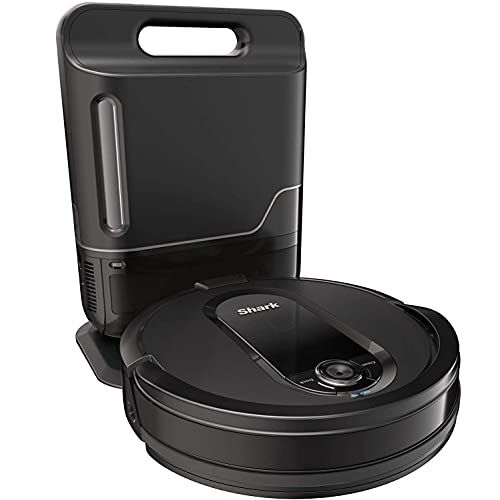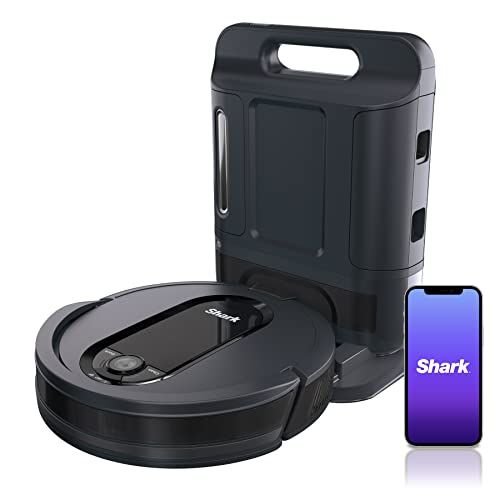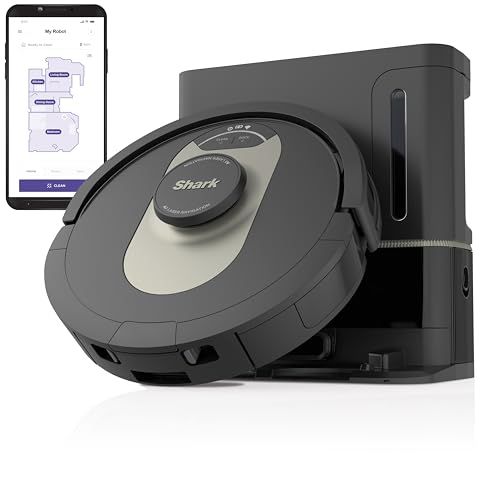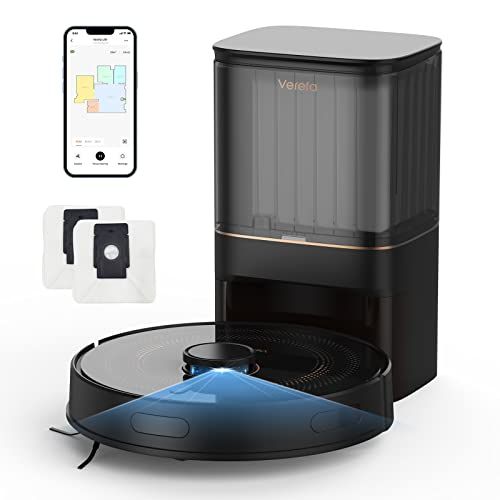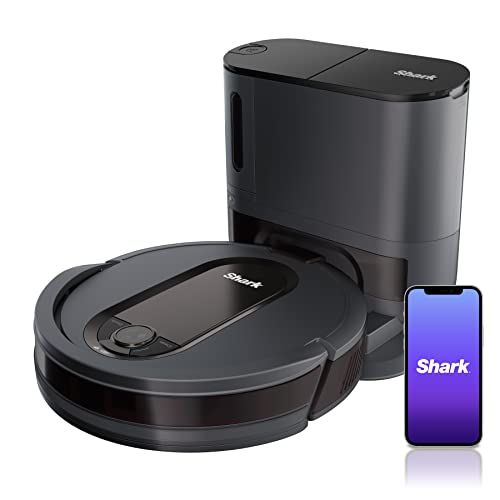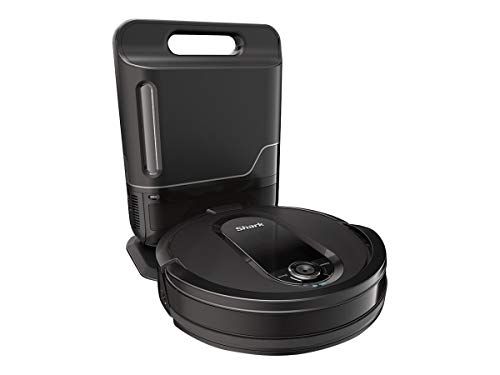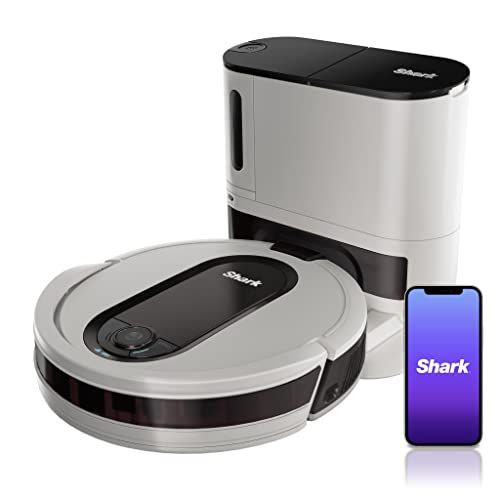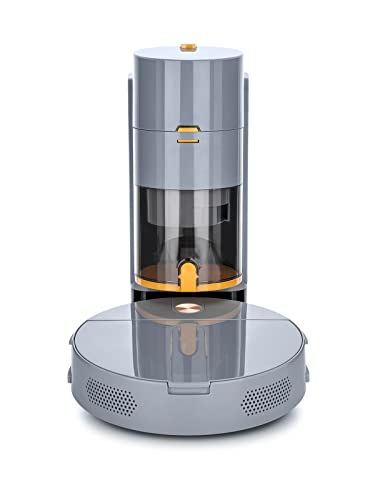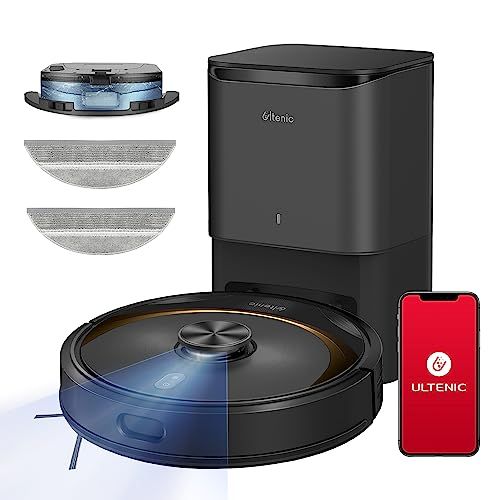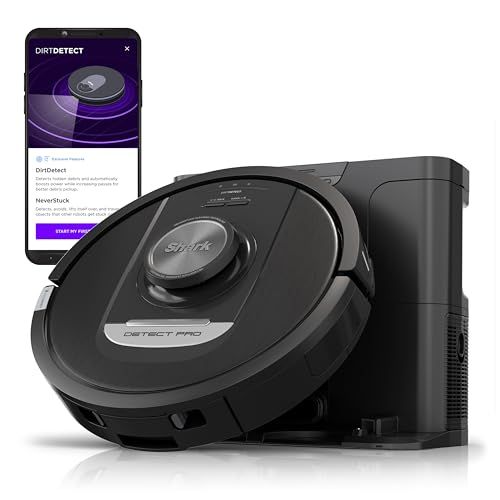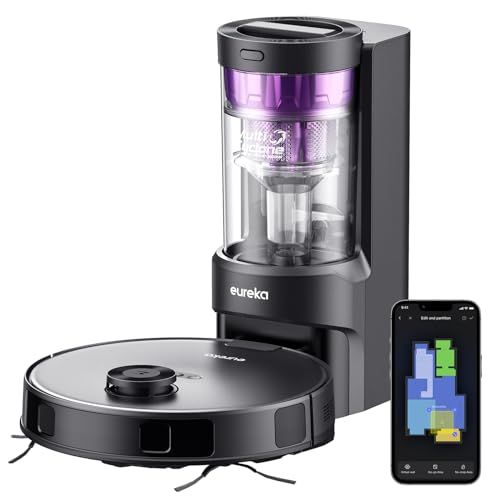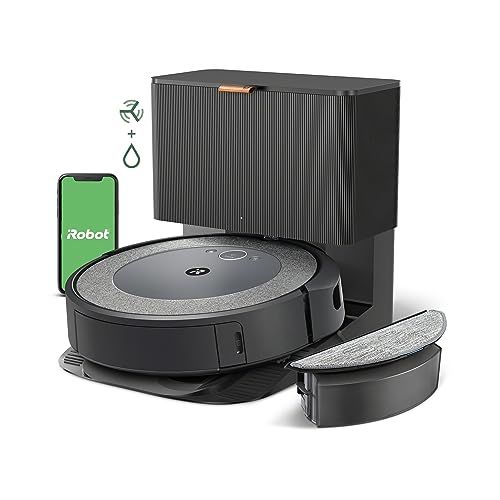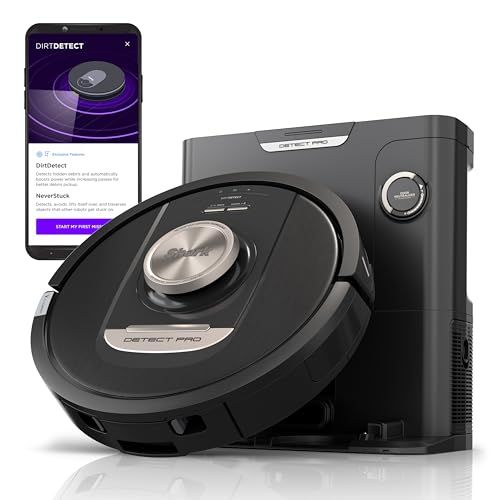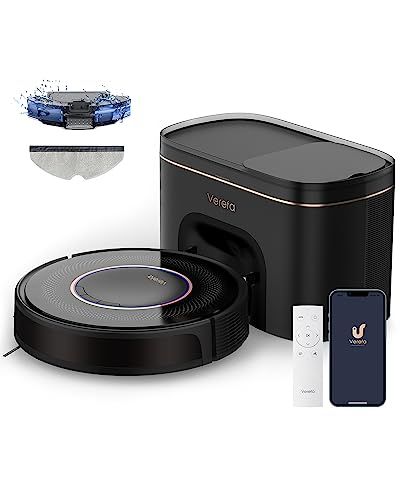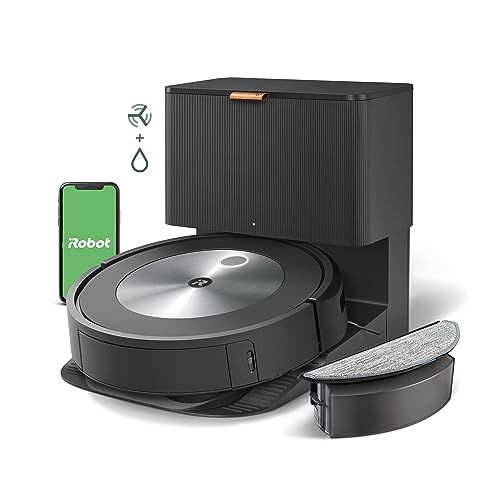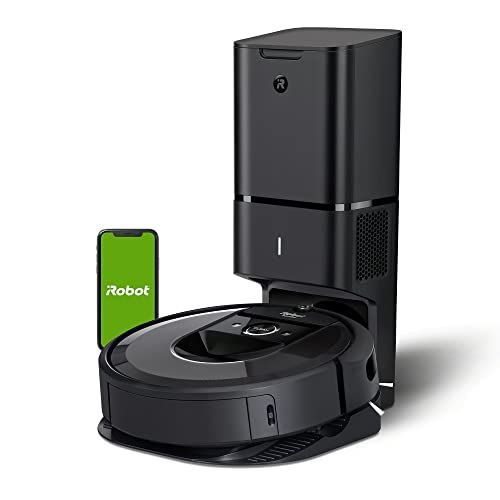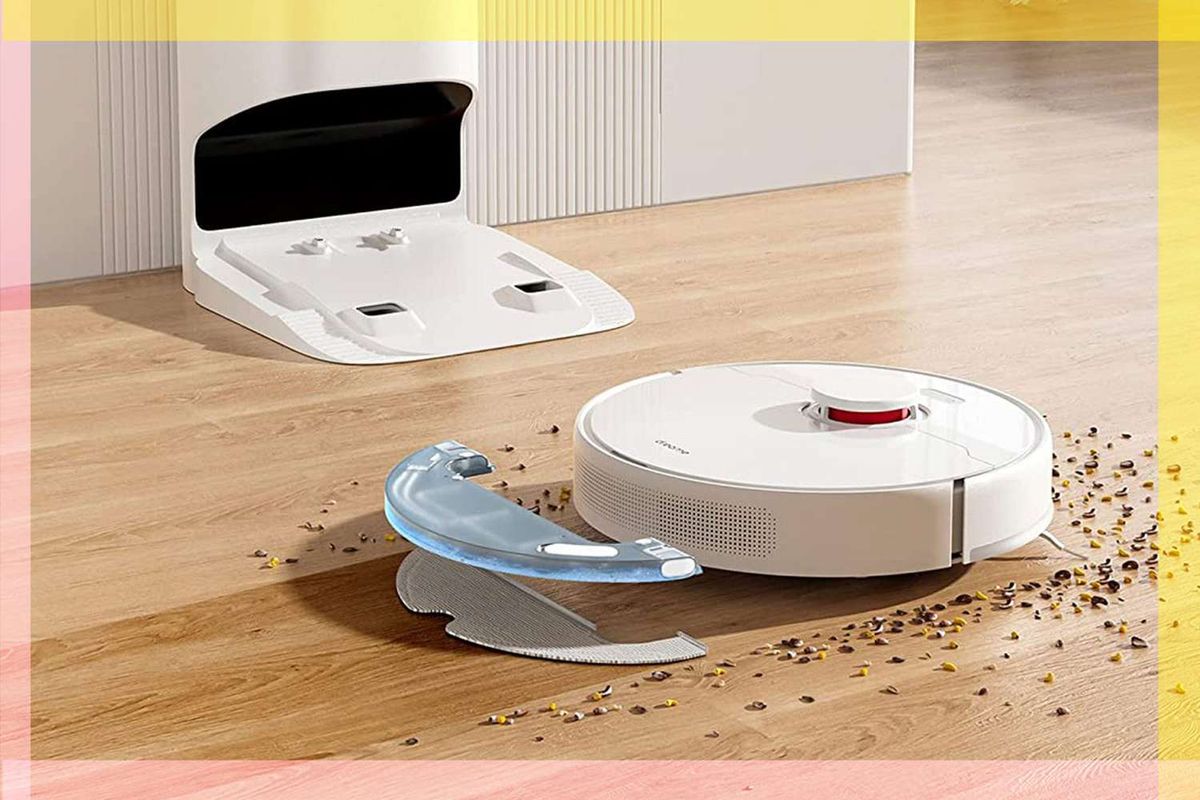
Self-emptying vacuum cleaners are an innovative type of vacuum that automatically empties its own dust bin. Unlike traditional vacuums where you have to manually empty the dust container, self-emptying vacuums collect dirt and debris into a base station that holds 30-60 days worth of accumulation before needing to be emptied.
This completely hands-free process makes self-emptying vacuums extremely convenient and hygienic. You simply dock the vacuum after cleaning and the base station takes care of dumping everything out for you. No more fussing with messy dust bins!
Self-emptying vacuums deliver several other great benefits as well. They are ideal for people with allergies or asthma because the dust and allergens become sealed inside the base station. You no longer have to worry about exposure when emptying the vacuum dirt container yourself. The large capacity bases also mean you can go weeks or even months without thinking about the dirt at all.
Overall, self-emptying vacuums represent a major step up in convenience without requiring a steep learning curve. They function just like any other vacuum during cleaning, but let you skip the chore of manual emptying.
How Self-Emptying Works
Vacuum cleaners with self-emptying bases utilize an internal dustbin that collects all the dirt, dust, and debris picked up during cleaning sessions. Once this dustbin reaches capacity, which may take several weeks depending on frequency of use, the vacuum will automatically initiate the self-emptying process.
This is accomplished through sensors that monitor dust levels and notify the vacuum when it's time to empty the bin. The self-emptying mechanism will remove accumulated dust and debris into an enclosed bag or receptacle built into the base, allowing the internal dustbin to be reused.
Most self-emptying robot vacuums are designed to empty themselves multiple times before the bag or receptacle needs to be replaced or emptied manually. For example, some models can go 2-3 months before requiring manual emptying of the base. This hands-free process is a huge benefit for those looking to avoid direct contact with dirt and dust.
Overall, self-emptying bases provide a convenient, mess-free way to autonomously maintain these vacuums and maximize cleaning cycles between manual bin emptying. The technology eliminates direct handling of debris for weeks at a time.
Benefits of Self-Emptying
Automatic emptying is one of the biggest benefits of self-emptying vacuum cleaners. These vacuums empty the collected dirt and debris into an enclosed bag or receptacle within the base unit. This means you don't have to manually empty the vacuum after every use like you would with a standard vacuum.
Some key benefits of self-emptying technology include:
Less manual emptying needed - The main advantage is that the vacuum empties itself, so you don't have to do it as often. This saves time and keeps your hands clean. Depending on the model, self-emptying bins may only need emptying every few weeks.
More hygienic - Manual emptying of traditional vacuums exposes you to dust and allergens. Self-emptying models keep the dirt enclosed so you have less contact with it. This helps reduce dust and allergens in the home.
Continuous cleaning - Self-emptying vacuums can hold more debris before needing attention. This allows for longer uninterrupted cleaning sessions. You can clean larger areas without having to stop and empty the bin.
Self-emptying technology takes away one of the most tedious parts of vacuuming - having to frequently stop and empty the dirt. This makes cleaning faster, more convenient, and more sanitary. If you want to avoid regular contact with dirt and dust, a self-emptying vacuum is an excellent option.
Types of Self-Emptying Vacuums
Self-emptying technology is available in upright, stick, handheld, and robot vacuum models.
Upright Vacuums
Upright vacuums with self-emptying bases are powerful cleaners well-suited for carpets. They have large dust bins and wide cleaning paths to efficiently pick up debris. The self-emptying base allows the vacuum to keep running longer before needing to be emptied manually. Popular upright models with self-emptying include the Shark Vertex AZ2002 and Dyson Ball Animal 2.
Stick Vacuums
Stick vacuums are lightweight and versatile. Self-emptying stick models like the Dyson V15 Detect allow for easy cleaning of floors and other surfaces without constantly having to empty the bin. The detachable hand vac makes them suitable for above floor cleaning as well.
Handheld Vacuums
Handheld vacuums are great for small cleanups. Self-emptying handhelds like the Dyson Omni-glide allow you to quickly tidy up without interruptions to empty the bin. They're ideal for hard to reach areas and small messes.
Robot Vacuums
Robot vacuums can autonomously clean your floors. Self-emptying models like the iRobot Roomba j7+ and s9+ can clean for weeks without supervision. After every cleaning session, they automatically empty accumulated debris into their base so you don't have to. This makes them very convenient to keep floors constantly cleaned.
Self-Emptying for Pet Hair
One of the key benefits of self-emptying vacuum cleaners is their ability to handle pet hair effectively. Homes with pets tend to deal with a lot of shed fur and dander on floors, furniture, and in carpets. This can be a chore to constantly clean up.
Self-emptying vacuums are designed to easily suck up pet hair throughout the home without getting clogged or filled up as quickly. Their large dust bins allow you to clean multiple rooms or areas before needing to empty the vacuum. Some models have specialized pet hair brushes and powerful suction to deep clean pet fur from carpet fibers and upholstery.
The self-emptying base automatically transfers all the collected pet hair from the vacuum's bin into an enclosed bag. This takes the effort out of having to manually empty compacted wads of pet fur each time you vacuum. The allergen sealed disposal bags also help contain dander and allergens inside so they don't get released back into the air when emptying the vacuum.
For pet owners, self-emptying vacuums can make quick work of keeping up with all the excess fur. Their continuous suction power and large dust capacity reduce the frequency of having to stop to unclog and empty the vacuum while cleaning. This allows more time vacuuming and less time maintaining the vacuum when dealing with the ongoing mess of pet hair.
Cordless Self-Emptying Models
One of the biggest innovations in recent years is cordless vacuums with self-emptying bases. This allows you to enjoy the freedom of a cordless vacuum with the added convenience of self-emptying. Here are some key benefits of cordless self-emptying vacuums:
Benefits of cordless convenience
Complete flexibility to clean anywhere without cords limiting your reach or getting tangled
Easy to quickly clean up small messes without having to drag out a big corded vacuum
Great for cleaning cars, hard to reach areas, and quick pick-ups
No cords to unravel or trip over
Battery life and charge time
Runtimes of 40-60 minutes per charge are common for cordless self-emptying vacuums
Batteries can take 2-3 hours to fully recharge, so optimal for cleaning 1-2 rooms per charge
Some models have swappable batteries you can alternate between to reduce downtime
Charging stations make it easy to dock and charge the vacuum when not in use
Cordless functionality means you can quickly grab it for a fast clean up without having to stop and plug in
So if you want the ultimate in convenient cleaning, a cordless self-emptying vacuum provides the best of both worlds. You get the great benefits of cordless cleaning combined with the hands-free emptying of a self-emptying base. Just charge up the battery and you can clean whenever and wherever you want without any hassles.
Self-Emptying for Allergies
Vacuum cleaners with self-emptying bases can be a great choice for allergy sufferers. The self-emptying feature means you don't have to come in contact with allergens when you empty the vacuum. The dust and debris is automatically emptied into the base's bag or bin.
Many self-emptying vacuums also utilize HEPA filtration. HEPA stands for "high efficiency particulate air" and it captures 99.97% of particles as small as 0.3 microns. That includes most pollen, dander, dust mites, and other common allergens. The HEPA filter ensures that these allergens are trapped and don't get released back into the air when emptying the vacuum.
Some self-emptying vacuums have a completely sealed filtration system so that no dust or allergens can escape. Others have an extra pre-filter before the HEPA to capture larger particles.
Overall, the hands-free emptying combined with HEPA filtration can make self-emptying vacuums an ideal choice for reducing allergy triggers in the home. The powerful suction picks up allergens from floors while the filtration system traps them so they don't recirculate throughout the house.
Maintenance Tips
Keeping your self-emptying vacuum working properly requires some simple maintenance. Here are some tips:
Emptying the Base
Empty the dust bin in the base when it reaches max capacity. Check the indicator light or app to know when it's full.
Remove the dust bag or container from the base and dispose of debris. Some models have disposable bags while others have washable containers.
Avoid overfilling the base, which can lead to clogs and sensor issues. Empty regularly.
Washing Filters
Remove and rinse filters periodically to keep them free of hair, dust and debris. Allow to air dry completely before replacing.
Check your manual for how often to wash filters. Every 3 months is fairly common.
Use water only to clean filters. No soap or cleaning products.
Replacing Parts
Replace filters and brushrolls at least once a year or when worn. Using worn parts reduces performance.
Order replacement parts directly from the manufacturer.
Follow instructions carefully when installing new filters and brushrolls.
Proper maintenance keeps your self-emptying vacuum working its best so you can enjoy the convenience of automatic dirt disposal.
Popular Brands
Self-emptying vacuum cleaners are now available from several leading brands. Here's an overview of some of the top options:
Dyson
Dyson pioneered self-emptying and cordless vacuum technology. Their self-emptying models include:
Dyson V11/V15 Detect: Dyson's latest cordless stick vacuums can self-empty into the clean base after cleaning. They feature whole-machine HEPA filtration, an LCD screen, and laser dust detection.
Dyson Outsize: A self-emptying upright vacuum with 150% wider cleaner head vs standard models, designed for whole home cleaning. Includes 2 replaceable batteries for up to 120 minutes of fade-free power.
Dyson Omni-glide: A slim cordless vacuum that lies flat and pivots to reach under furniture. It self-empties into the dock.
Shark
Known for powerful suction, Shark's self-emptying vacuums include:
Shark IQ Robot: Shark IQ AV1002AE, Shark AV2501AE AI. A self-emptying robot vacuum with home mapping, app control, allergen defense, and self-cleaning brushroll. Empties up to 30 days of debris.
Shark Vertex DuoClean: An upright vacuum with DuoClean floorhead, HEPA filtration, and large self-empty base. Runtime up to 120 minutes.
Shark AI Ultra: A self-emptying upright vacuum with AI laser navigation, odor and allergen defense, voice control, and long hair removal comb.
iRobot
The Roomba robot vacuum range features self-empty bases. Models include:
Roomba i7+: Newest model avoids objects and cleans specific rooms on command via the iRobot app. Empties itself for 60 days.
Roomba s9+: Flagship model with powerful suction and PerfectEdge technology to clean along edges and corners. Links to Braava jet m6 robot mop.
Roomba i3+: Budget robot vacuum model with smart mapping, control via Alexa or Google Assistant, and automatic dirt disposal.
Conclusion
Self-emptying vacuum cleaners offer a convenient and easy way to keep your floors clean without having to manually empty the dustbin after each use. Here's a quick summary of the key benefits we've covered:
Requires less frequent emptying - The self-emptying base can hold weeks' worth of debris before needing to be emptied, saving you time and hassle.
Maintains strong suction - By auto-emptying, the vacuum maintains peak suction power during cleaning sessions. No more suction loss as the dustbin fills up.
Great for allergies/pets - Self-emptying models hygienically seal away dust and allergens into the base, helping households with pets or allergies.
Cordless freedom - Many new self-emptying vacuums are cordless, allowing you to clean your whole home without plugging in.
Advanced filtration - HEPA filters and multi-stage filtration systems capture dust, pollen, and allergens so they don't recirculate into the air.
Overall, self-emptying vacuums take the effort out of emptying while optimizing performance and hygiene. If you're looking for greater convenience and consistently powerful floor cleaning, a self-emptying model is highly recommended for any home. Advanced cordless models provide unstoppable cleaning power with incredible ease of use.
Vacuum Cleaners with Self-Emptying Bases comparison
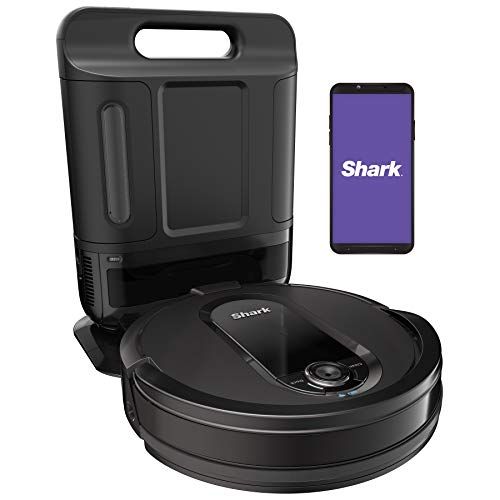 | 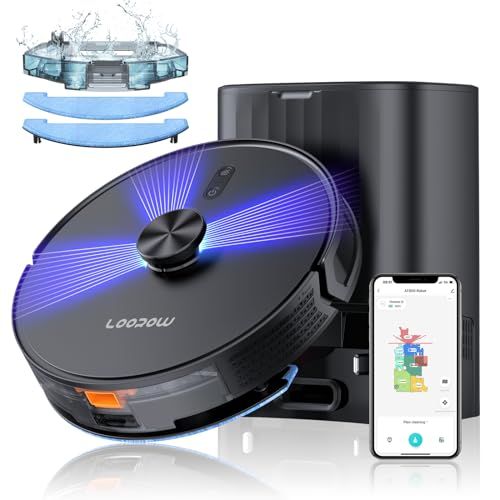 | 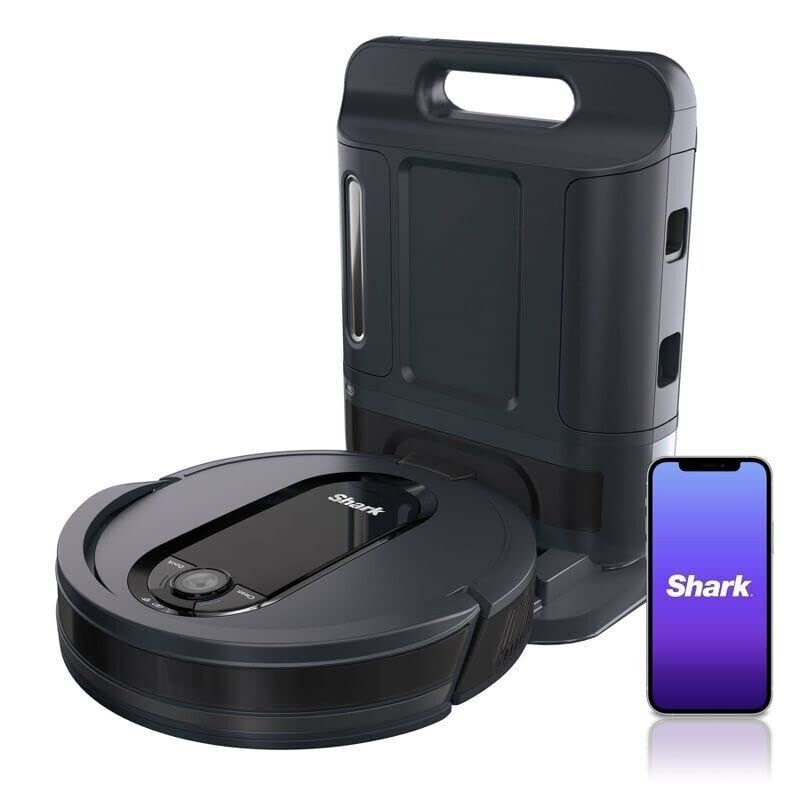 | 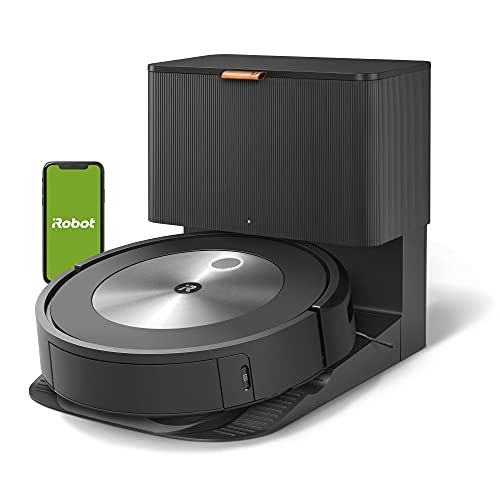 | 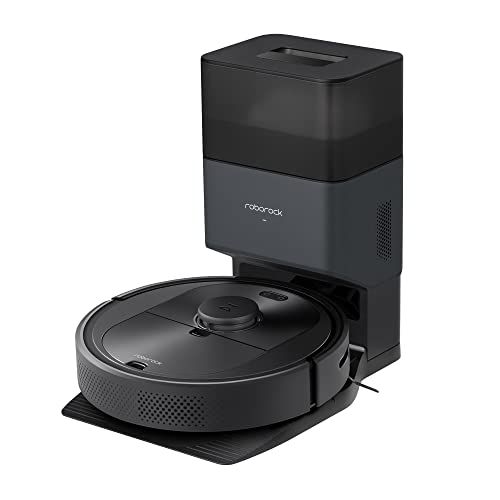 | |
|---|---|---|---|---|---|
| Model | AV1002AE | RV911AE | J655020 | Q5+ | |
| Brand | Shark | Loorow | Ninja | iRobot | roborock |
| Weight | 5.9 pounds | 14.7 pounds | 14 pounds | 18.72 pounds | 15.4 pounds |
| Color | Black | Black | - | Graphite | Black |
| Batteries | 1 Lithium Ion batteries required. (included) | 1 Lithium Ion batteries required. (included) | 1 Lithium Ion batteries required. (included) | 1 Lithium Ion batteries required. (included) | 1 Lithium Ion batteries required. (included) |
| Battery life | 30 days | 10 years | - | 60 days | 180 minutes |
| Country of origin | - | China | - | - | - |
| Special feature | Bagless | Automatic Dust Collection | Pet Hair Pick Up, Obstacle Avoidance | Identifies and Avoids Pet Waste & Cords, Smart Mapping, Ideal for Pet Hair, Empties Itself for 60 Days, Wi-Fi Connected, Compatible with Alexa Identifies and Avoids Pet Waste & Cords, Smart Mapping, Ideal for Pet Hair, Empties Itself for 60 Days, Wi-Fi Connected, Compatible with Alexa See more | LiDAR Navigation, Powerful 2700 Pa Suction, No-Go Zones and Invisible Walls, Multi-Level Mapping, App Control, Voice Control, Floating Main Brush, Scheduling, Pet Hair Pick Up, Self-Emptying LiDAR Navigation, Powerful 2700 Pa Suction, No-Go Zones and Invisible Walls, Multi-Level Mapping, App Control, Voice Control, Floating Main Brush, Scheduling, Pet Hair P… See more |
| Product dimensions | 12.9"L x 12.6"W x 3.5"H | 13.5"L x 13.5"W x 3"H | 15"L x 13"W x 3"H | 13.4"L x 13.3"W x 3.4"H | 16.14"L x 14.96"W x 19.69"H |
| Model name | IQ Robot Vacuum AV1002AE with XL Self-Empty Base | AT800 | - | J655020 | Q5+ |
| Control method | Voice | - | - | - | App, Voice |
| Warranty description | 1 year. | - | - | - | - |
| Voltage | 120 Volts (AC) | - | - | - | 110 Volts |
| Capacity | 0.17 Quarts | 3.2 Liters | - | - | 2.5 Liters |
| Price | $399.9 | $299.99 | $349.97 | $615 | - |
FAQ
What is a self-emptying robot vacuum?
A self-emptying robot vacuum is a robotic vacuum cleaner that has an automatic dirt disposal system. The vacuum will empty its own dustbin into a larger base station or bag after completing a cleaning cycle, so you don't have to manually empty it out as often.
How does a self-emptying vacuum work?
The self-emptying vacuum will return to its base station and position itself over a chute. Using suction power, it then transfers the accumulated dirt and debris from its internal bin into a bag or compartment in the base. This allows the vacuum to empty itself and continue cleaning without needing manual emptying as frequently.
What are the benefits of a self-emptying vacuum?
The main benefits are convenience and hygiene. You don't need to manually empty the robot as often, reducing a tedious maintenance task. The dust and allergens are sealed away into the base, minimizing exposure and mess. Some bases can hold 30+ bins worth of debris before needing manual emptying.
How often do you need to change the bag or empty the base?
Depends on the model, but typically every 2-3 months. High-end models may only need emptying a few times a year. The robot and base will alert you when the bag or base compartment is full and needs changing or emptying.
Do all robot vacuums self-empty?
No, self-emptying is still a premium feature found on higher-end robot vacuums. More affordable options need to be manually emptied after each cleaning cycle. Check the product description to confirm if a self-emptying base is included.
Is the self-emptying base noisy?
The noise level varies across models, but most bases are relatively quiet. Some make a muted whirring sound when the robot is emptying itself, which only lasts about a minute. Higher quality bases are well insulated to keep noise to a minimum.
How does the robot find and dock with the base?
The robot vacuum has sensors to detect signals from the base station, as well as mapping technology to navigate back to it. The base emits infrared beams or other signals the robot can follow to accurately re-dock. Some models also use cameras to identify the base's location.
Can you install the base anywhere?
The base station needs to be placed on a hard, level surface, with adequate clearance around it so the robot can easily dock. It requires access to power so should be located near an outlet. Keep the base in an open area, avoiding tight spaces or clutter.
Does the robot vacuum work without the base?
No, the self-emptying robot vacuums are designed to work together with their base station. The robot needs the base in order to empty itself and recharge. However, the vacuum will still clean effectively in between automatic emptying cycles.
How much maintenance does a self-emptying vacuum need?
Very little - just occasional filter cleaning and replacing bags when full. The regular brushes may need replacing over time. But otherwise the automatic emptying means less hands-on maintenance than standard robot vacuums. Always follow the manufacturer's recommendations.
